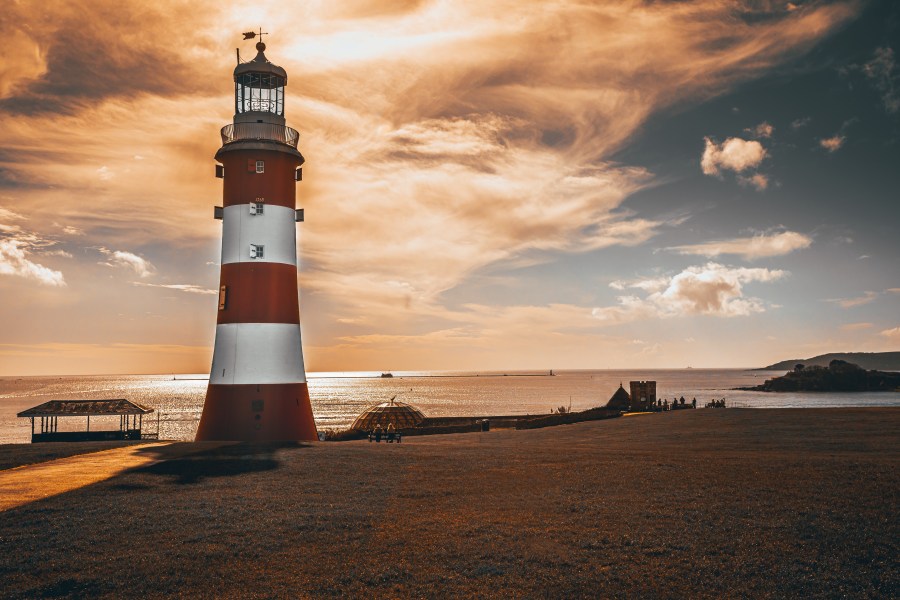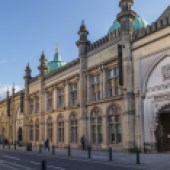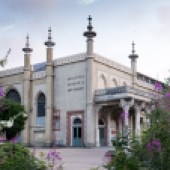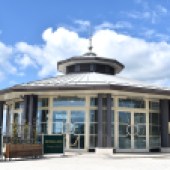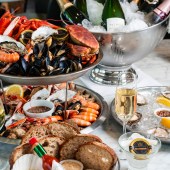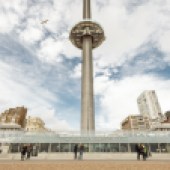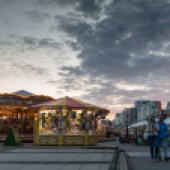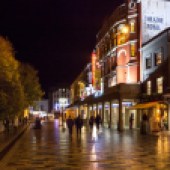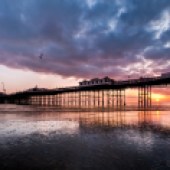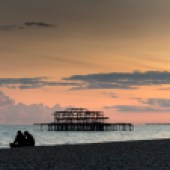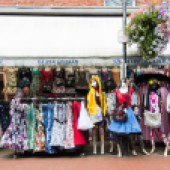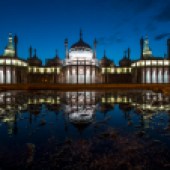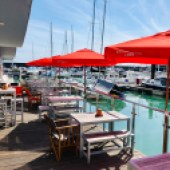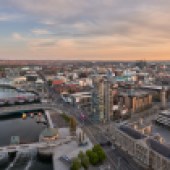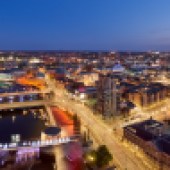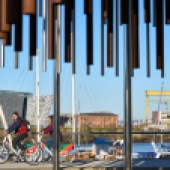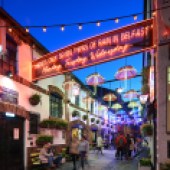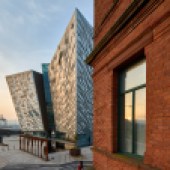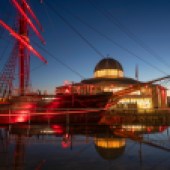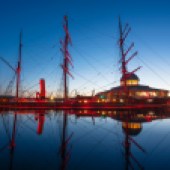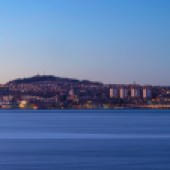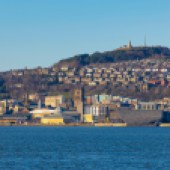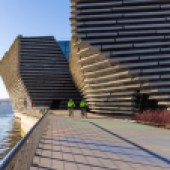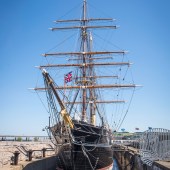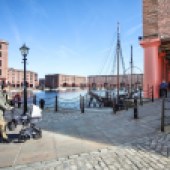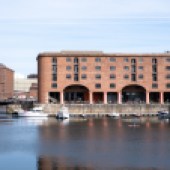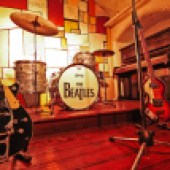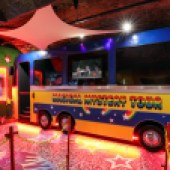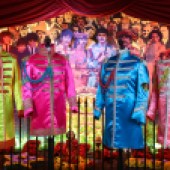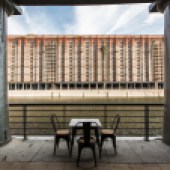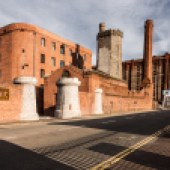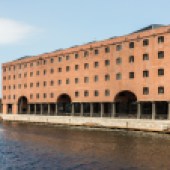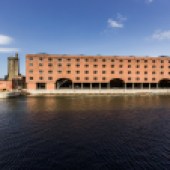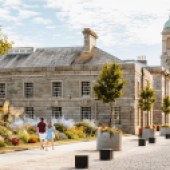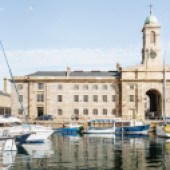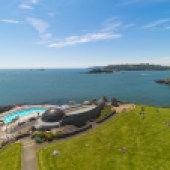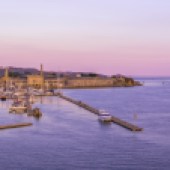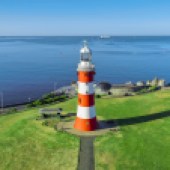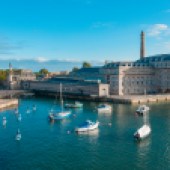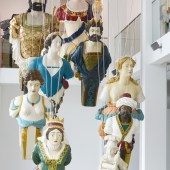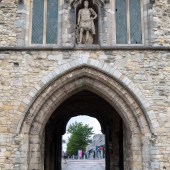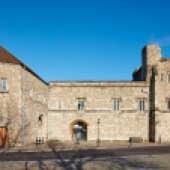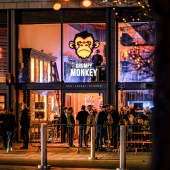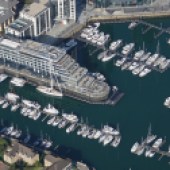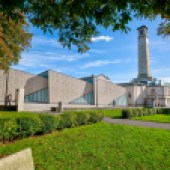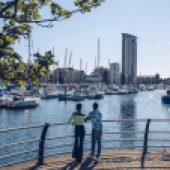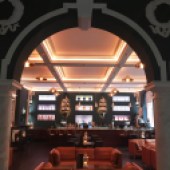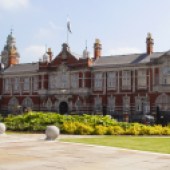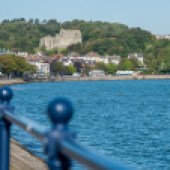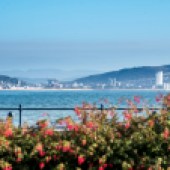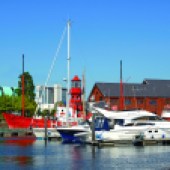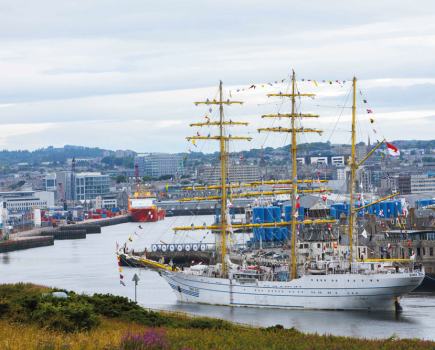Think coast and you don’t always imagine cities, but we have some amazing ones close to the shoreline, as CHRISSY HARRIS discovers the UK’s best coastal cities to visit.
1. Swansea
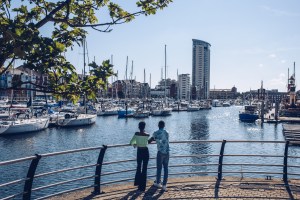
Swansea has great waterfront views (pic credit: Visit Swansea Bay)
Enjoy all the benefits of being in a waterfront city before heading out to explore glorious beaches, Mumbles and the rest of the Gower Peninsula, the UK’s first Area of Outstanding Natural Beauty. The region’s poetic splendour is reinforced by being Dylan Thomas’ birthplace, with plenty of opportunities to find out more about his life and work with guided tours and a permanent exhibition at the Dylan Thomas Centre. Swansea is home to plenty of other heritage stops, including the oldest museum in Wales (Swansea Museum) and the first passenger railway in the world (the Swansea to Mumbles Train took its first trip in 1807). There has also been a series of high-profile projects, including the construction of The Tower at Meridian Quay. The skyscraper – complete with a top-floor restaurant, the Grape and Olive – has well and truly become part of the skyline now, along with the National Waterfront Museum.
WHERE TO EAT AND DRINK… BYO wine and beer and sample the set menu at Truffle (King Edward’s Road), or for more posh nosh, head to the Michelin-starred Beach House in Oxwich. Môr is also an independent restaurant in Mumbles, serving the ‘very best local produce from sea and soil’.
WHERE TO STAY… Oyster House Hotel in Mumbles offers a boutique retreat, home to 16 stylish bedrooms, including family-friendly and dog-friendly options (from £90 per night, oysterhousemumbles.com). Farther out, Tyn Cellar Farm and B&B a is a four-star, Grade II-listed listed farm complex offering a choice of accommodation, from one-bed cottages to the Stables, which sleeps eight (from £85 per night, tyncellarfarm.co.uk).
DON’T MISS… The pubs in Mumbles, including The Victoria Inn (also known as Mumbles Ale House) and the Park Tavern.
2. Liverpool
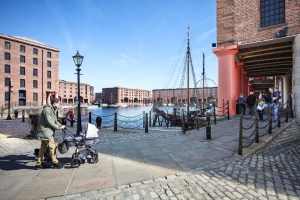
Liverpool’s Albert Dock is a major attraction (pic credit: Royal Albert Dock)
The Royal Albert Dock is a complex of dock buildings and warehouses at the heart of Liverpool’s historic waterfront, a designated UNESCO World Heritage Site. This prestigious global accolade, plus being made European Capital of Culture in 2008, have been game changers for the city. A surge of serious investment saw the creation of the Echo Arena and retail and leisure paradise Liverpool One, with some of the city’s best-loved gems undergoing extensive renovations, including St George’s Hall, the Bluecoat and World Museum Liverpool. If you’re looking for entertainment, this might be one of the best coastal cities for you. The city is home to a thriving independent food scene (mainly around the Bold Street, Castle Street and Baltic Triangle areas), hedonistic nightlife, plus enough arts and culture to keep you entertained for days. There are more galleries and museums here than in any other city outside London.
WHERE TO EAT AND DRINK… Get spoilt for choice at the Baltic Market (Stanhope Street)- the former brewery is now home to a street food market and bar. Röski (Rodney Street) is where Anton Piotrowski, former winner of Masterchef: The Professionals, creates stunning Michelin-starred menus. After, you can sip ales and continental beers at The Ship & Mitre (Dale Street).
WHERE TO STAY… The Titanic Hotel Liverpool is a converted 19th-century warehouse, part of the redevelopment of the historic Stanley Dock complex (from £85 for a classic room, titanichotelliverpool.com). See great views inside and out at the seriously chic Hope Street Hotel (stays from £119, hopestreethotel.co.uk).
DON’T MISS… See the skyline in all its glory from the Mersey Ferry, and look out over the water from Crosby Beach. Take in the sunsets as you walk along Otterspool Promenade. For a full 360, take the Liverpool Cathedral tower experience. It’s the highest cathedral in the UK – 152m (500ft) above sea level.
3. Southampton
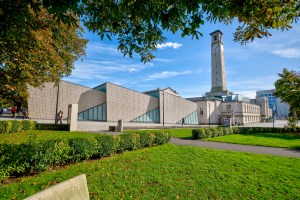
Southampton’s Sea City Museum (pic credit: James Newell)
With loads of independent shops on Oxford Street, restaurants and bars, a generous portion of green spaces and parks, art galleries, shopping, top theatre, museums and more, you’ll wonder why you haven’t stayed here before. Most of the city can be explored on foot and by following the city’s medieval wall – one of the longest of its kind in the UK. God’s House Tower is a contemporary arts and heritage attraction, housed in part of the ancient wall. From there, you can stroll to Southampton City Art Gallery, which has a collection that spans eight centuries, including paintings by Monet. And don’t forget the Sea City Museum, which includes an exhibition dedicated to one of the most famous ships to set sail from Southampton, The Titanic.
WHERE TO EAT AND DRINK… The White Star Tavern (Oxford Street) was refurbished last year and is a good hangout. It’s also one of the hotels where many of the Titanic’s passengers stayed before boarding the ill-fated ship. Dancing Man Brewery (Town Quay) offer sea views and pub eats, and the newly opened Gin & Olive (The Arts Complex) has hundreds of handpicked gins, as well as sharing plates and gourmet burgers.
WHERE TO STAY… Directly on the waterfront, Southampton Harbour Hotel and Spa offers chic five-star accommodation from £215 per night, as well as Ennios Boutique Hotel (Town Quay), a converted Victorian warehouse building, with ten stylish rooms from £175 per night, and an Italian restaurant downstairs. The Pig in the Wall (Western Esplanade) is a fab bolthole, set within the city’s medieval walls (from £215 per night, thepighotel.com)
DON’T MISS… The water- it’s actually quite difficult to see the sea from the city centre. Town Quay is your best bet or else Mayflower Park is a good place to watch the cruise liners set sail. For some beach action, head to Weston Shore.
4. Brighton
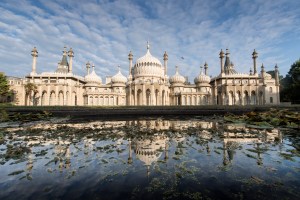
Brighton’s Royal Pavilion (pic credit: Adam Bronkhorst)
The music scene is buzzing, the pubs plentiful and it’s dream foodie territory, particularly if you’re vegan or veggie. Explore The Lanes for quirky shops and Dukes Lane for a mix of fashion boutiques and unusual gift shops. Brighton Open Market is home to more than 50 of the city’s local producers and makers, with a strong focus on healthy food and ethical products. You’ve got to do the Royal Pavilion and the pier, just to make sure you get your fill of good, old-fashioned seaside fun. Fairground attractions, fish and chips, arcades and candy floss will take you right back to that childhood feeling of being overloaded with excitement. Wherever you are in this city, you’re only a short drive/bus ride/cycle from the beautiful South Downs, the coastline and the white cliffs. You can even take a boat tour out to see the new Rampion Wind Farm.
WHERE TO EAT AND DRINK… At the top-end, you’ve got The Gingerman (Norfolk Square) and 64 Degrees (Meeting House Lane). Terre à Terre (East Street) does award-winning vegetarian dishes. Seafood is also very much on the menu in Brighton, proving to be one of the best coastal cities- try the Copper Clam (Kings Road Arches) or Riddle and Finns (on the seafront or there’s another one located in The Lanes). You should also try out the new floating bar and restaurant at Brighton Marina Yacht Club.
WHERE TO STAY… Artist Residence (Regency Square) is a seriously stylish boutique, where each of the rooms has been decorated by different artists (from £99 for a double with a sea view). A recent refurbishment means The Grand (seafront) is looking incredible in all its Victorian glory, from £140 for a classic double room).
DON’T MISS… The British Airways i360- a 162m observation tower on the seafront. From the fully enclosed viewing pod, visitors can experience 360-degree views across the city, the South Downs and the English Channel.
5. Plymouth
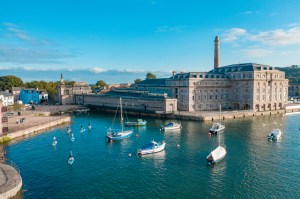
Plymouth is a city with a stunning view: Plymouth’s Royal William Yard (pic credit: Jay Stone)
The Hoe, Smeaton’s Tower lighthouse, an Art Deco lido, marinas, loads of waterfront locations and close proximity to Devon’s coast and countryside make this city a dream destination. The Barbican, with cobbled streets and quirky cafes and shops, lead out to the famous Mayflower Steps, close to the spot where the Pilgrim Fathers set sail for America in 1620. Royal William Yard has a collection of beautifully restored Grade I-listed buildings, once a Royal Navy victualling yard and now home to bars, restaurants, galleries, shops, hotels and apartments. Explore Sutton Harbour for lively restaurants, bars and a spot of yacht envy, or Ebrington Street for good coffee and independent shops.
WHERE TO EAT AND DRINK… On the waterfront of one of the best coastal cities, Harbourside fish and chips (Southside Street) is among the best of its kind. At Royal William Yard, try freshly caught seafood at The Hook & Line (you can even go out on its fishing boats and cook your catch). For some proper Plymouth charm (and characters to match) head to The Dolphin Hotel (The Barbican) or the Minerva Inn (Looe Street).
WHERE TO STAY… The Duke of Cornwall (Millbay Road) is a longstanding classic from £85 per night, offering modern comfort and a touch of Victorian grandeur. Farther out, Boringdon Hall Hotel and Spa (Plympton) has plenty of pampering in an historic Elizabethan setting, from £247 per night.
DON’T MISS… The Box- the city’s new (free-to-enter) museum, art gallery and archive is a wonderful way to while away a couple of hours.
6. Belfast
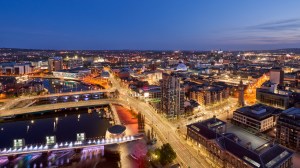
Belfast is now a top city break destination (pic credit: Richard Watson Photography)
Different quarters, including the Cathedral Quarter and Titanic Quarter, celebrate different aspects of the city’s heritage, each with a unique vibe. Cathedral Quarter is all cobbled streets, tiny walkways and street art. The leafy Queen’s Quarter is the regenerated students’ area and home to Belfast’s Botanical Gardens. Titanic Quarter, built on reclaimed land, is a tribute to the city’s role in the construction of the famous ship. Here, you can visit Titanic Belfast, which opened as a monument to Belfast’s maritime heritage on the site of the former Harland & Wolff shipyard. The Gaeltacht Quarter in the west of the city is all about Irish language and culture. Highlights include important political sites, cemeteries and locales.
WHERE TO EAT AND DRINK… Ox Belfast (Oxford Street), Deanes Eipic (Howard Street) and the Muddler’s Club (Warehouse Lane) all retained their Michelin stars this year. Award-winning chef Niall McKenna has opened Waterman Restaurant (Hill Street) in the Cathedral Quarter. There’s no shortage of great pubs in the city, particularly in the Cathedral Quarter. The Duke of York (Commercial Court) is a classic.
WHERE TO STAY… The Europa (Great Victoria Street), once the most bombed hotel in the world, is now famous for all the right reasons. It’s been beautifully refurbished and is in a top location, from £126 each night, europahotelbelfast.com. For five-star treatment, The Merchant (Skipper Street) is home to a seriously impressive façade and an elegant cocktail bar, from £249 each night, themerchanthotel.com.
DON’T MISS… Take a ride with Black Taxi Tours Belfast, see the famous Peace Wall and murals and learn about The Troubles from someone who has lived through them.
7. Dundee
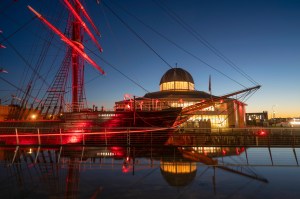
The RSS Discovery can be seen in Dundee (pic credit: Visit Scotland/Kenny Lam)
Great walking and cycling routes along the banks of the silvery Tay mean you can be in and out as you please, exploring both the urban and natural delights this quiet, friendly city has to offer. The V&A Museum, opened in 2018, designed by internationally acclaimed Japanese architect Kengo Kuma, stands at the heart of a £1 billion transformation of Dundee’s waterfront. The Dundee-built RRS Discovery, the steamship that took Captain Scott and Ernest Shackleton on their first expedition to Antarctica in 1901, is the centrepiece of an attraction and museum, with recognised collections of National Significance.
WHERE TO EAT AND DRINK… The locally-loved Clark’s Bakery (Annfield Street) is known as ‘the famous 24/7 belly heaven’ because of its opening hours. The Speedwell Bar, also known as Mennies, (Perth Road) is an iconic Dundee pub. The original Edwardian mahogany bar holds some 160 single malt whiskies.
WHERE TO STAY… Taypark House (Perth Road) in the city’s attractive West End is a chance to stay in a traditional Scottish baronial mansion, from £100 per night, tayparkhouse.co.uk. Hotel Indigo (Constable Street) is set in a former textiles mill, with an industrial interiors nod to the city’s jute-spinning past, from £76 for a standard room, ihg.com.
DON’T MISS… The Mills Observatory on Balgay Hill – a fully public astronomical observatory in a spectacular setting. Just four miles to the east of Dundee city centre lies the seaside suburb of Broughty Ferry, known as “the jewel in Dundee’s crown”.
To see more of our travel guides and the best coastal cities to visit, click here or pick up a copy of the magazine.

